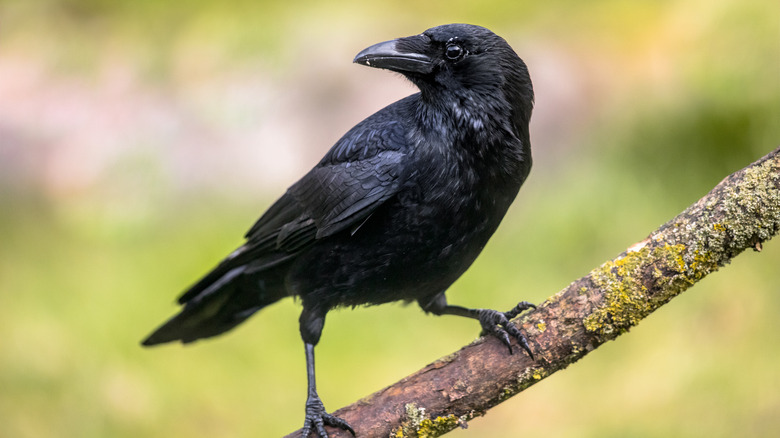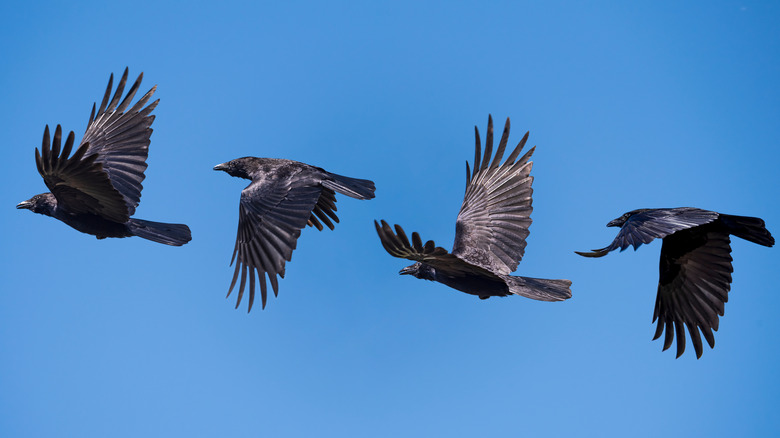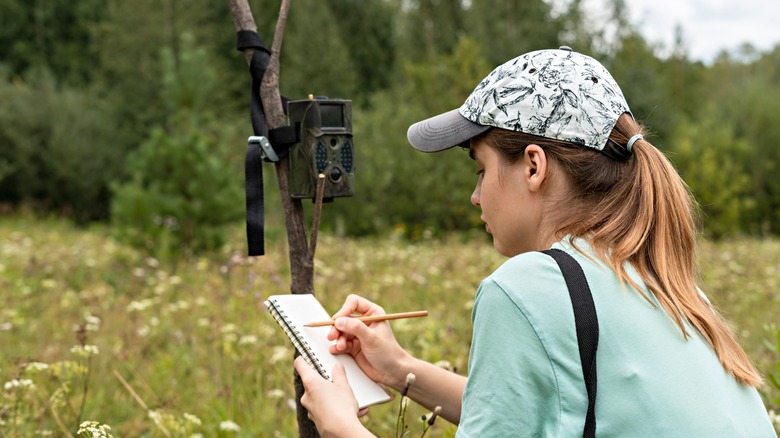Why Is It A Murder Of Crows?
It should come as no surprise to you that the English language is governed by rules. Your 8th grade creative writing teacher certainly made that clear to you several times back in the day. And if you work in a field where oral and/or written communication is important — such as, for example, writing articles — you'll almost certainly have to reference the rules that govern your work from time to time.
But here's the thing: English doesn't have a headquarters, so to speak, that retains the gatekeepers the language (the French do, though). So the "rules" that govern the English language aren't the result of a committee deciding things and then issuing edicts, but rather we just sort of all collectively agree to them. We mention this because, as you may have learned at some point in your life, that a group of crows is called a "murder" (other groupings of animals, such as a "parliament" of owls, are similarly weird). But here's the thing: that phrase is only "official" inasmuch as English speakers agree that it's official. And as it turns out, those head-scratching terms for groups of animals were effectively made up out of whole cloth by writers centuries ago, possibly with their tongues planted firmly in cheeks.
'Terms of Venery'
Travel back with us to the heady days of the 15th century, when the only people in England who could hunt were the aristocracy. Further still, the only people who could read about hunting were the aristocracy and the clergy, because they were the only ones who could read. Back in 1486, "The Book of Saint Albans" was published and, according to the Audubon Society, it's a "handbook on manliness" that, among other things, provided tips for hunting. It was also in that book that many of the "terms of venery" ("venery" being an archaic word for hunting) — which is to say, names for groupings of animals — first appeared. Examples include a "pride" of lions and a "herd" of deer. The tome also contained terms for groups of people, such as a "doctrine" of doctors.
As you may have guessed, those terms were just made up by the person who wrote the book. Other terms of venery were made up by other people who wrote their own books. As Babbel explains, "[T]erms of venery were the linguistic equivalent of silly hats: colorful, affected, fashionable, and very popular." Audubon writer Nicholas Lund further explains, "[T]erms of venery are, and always have been, whimsy. They're a lark ... applied at one time to groups of commonly-hunted animals but then extended for fun to groups of people, and to [other] creatures."
As for why the collective noun for crows is a murder? There are many theories but PBS states that folklore suggests that a group of crows was seen as an omen for death.
Science Says 'Not So Fast'
English is one thing, science is another, and English-speaking scientists, when discussing their work or writing academic papers or whatever, are going to be expected to adhere to the tacit rules of English. But when it comes to those goofy names for groups of animals, states Audubon, science draws a line. Specifically, writer Nicholas Lund asked a number of ornithologists whom he happened to have on speed dial about these terms of venery as it relates to birds, and a sampling of their responses seems to indicate that they pay them exactly zero heed. Dr. Noah Perlut, who researches bobolinks, said that he'd never heard of a group of his quarry being called a "chain." Woodcock researcher Jake Walker "sure as hell" would never call them that.
It's not just birds, either. Lund spoke to a wombat researcher (they're mammals, if you didn't know), asking her if she'd ever referred to a group of wombats as a "wisdom," and she tersely replied that wombats "do not form groups in the wild." The long and the short of it is that these colorful names are only "official" as long as we collectively agree that they're official. Most biologists, for their parts, are just going to go with more common terms such as a "flock" of this or a "herd" of that, or when all else fails, a "group."


